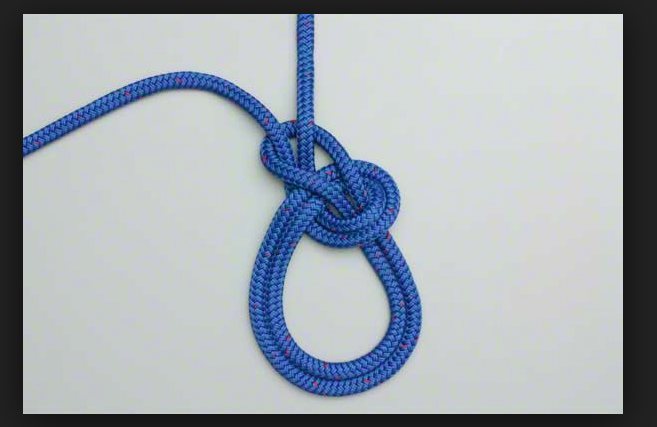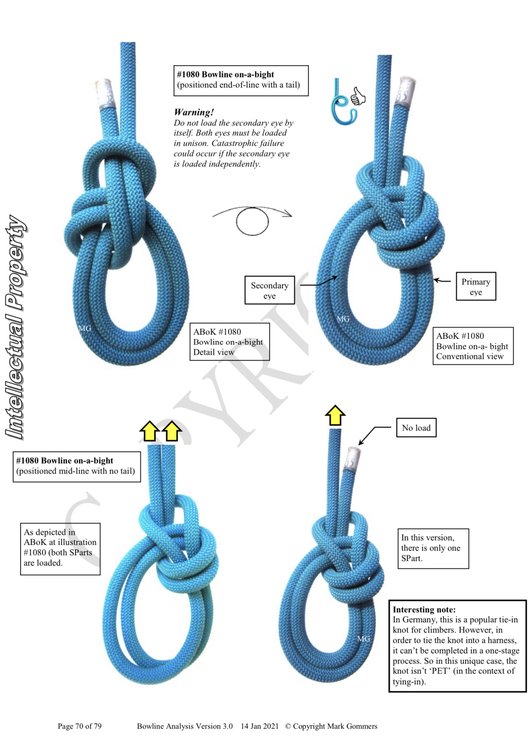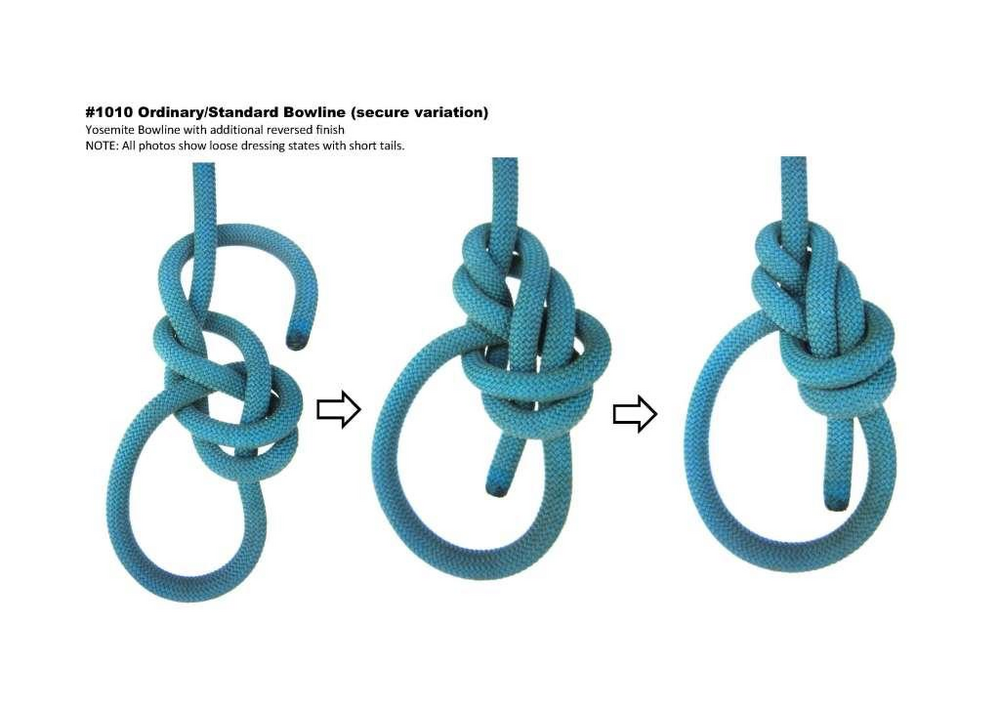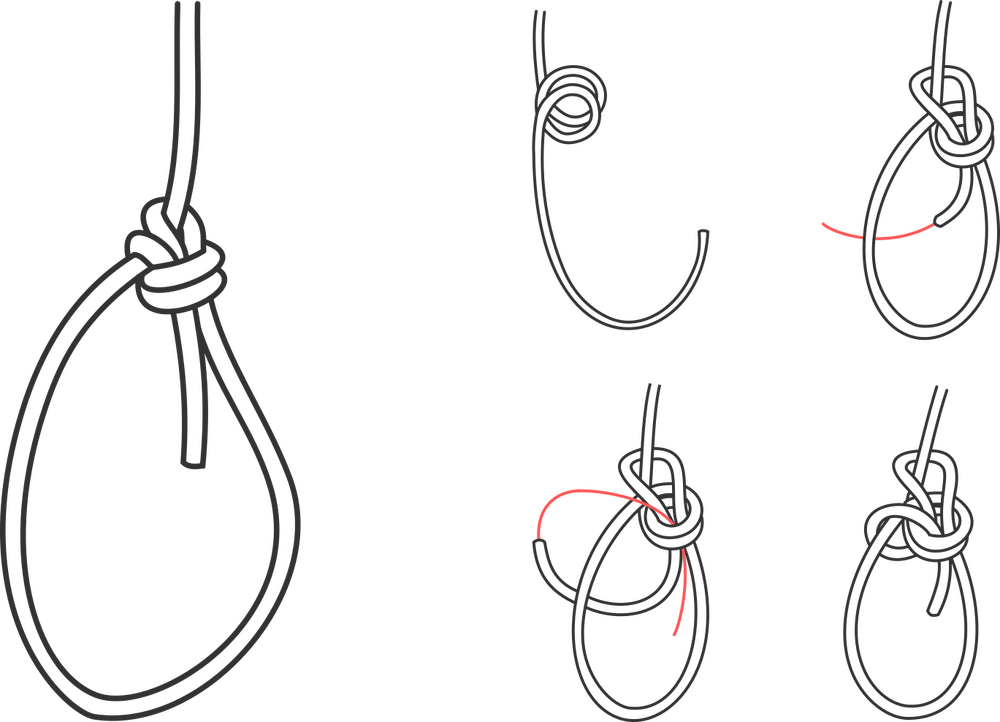Retraced bowline with a “tuck”
|
|
Ok just putting this out there for the masses. When I know I’m going to be taking a lot of falls on something, I like to tie in with the retraced bowline. However, the one thing I don’t like about it is where the end of the rope sticks out (like a figure 8 w/out the Yosemite finish). So to alleviate this, I like to tuck the end back through the nipping loops so it’s facing back towards me (like a figure 8 w/ a Yosemite finish). Hopefully that’s clear - if not I can post pictures. So basically I’m just curious if there’s any safety reason not to do this? Only downside I can think of is it’s sorta hard to visually inspect even if you’re familiar with bowlines. Which I don’t really care about. It’s super easy to inspect before finishing w/ the “tuck.” 1) I care 0% if you’re anti-bowline. Thanks! |
|
|
There are bowline variants where you tuck back through the nipping loop (e.g. Lee's Locked Yosemite Bowilne) so I assume it would be fine. The bowline pdf generally suggests that having more strands increases the breaking strength if anything, not that it really matters for climbing. |
|
|
You probably know this but just for clarity, there’s a right way and wrong way to tuck the end. If you just pass it back down the way it came out of the knot, you create essentially a very short bight as the tail. That could be a problem in a bowline, which can pass some rope back through the knot during cyclical loading. Like the Yosemite tuck on the figure 8, the tail needs to wrap “over” the other strands of the knot before passing back through toward you. The other thing about tucks is that they make it harder to hand-tighten the entire knot. You can’t yard on the free tail before tucking it because you’ll close the hole you want to pass back through. So you have to pass back through a loose-ish knot and then try to work the slack through the tucked tail, which is kind of hard to grip. This is less of a concern with a figure 8 since that knot tends to cinch once under the first load and stay cinched. That’s why it can be hard to untie. A cinched bowline can more easily re-loosen and pass some rope during cyclical loading. So even with the tuck I would have a good sized tail and be sure to inspect regularly if you are staying tied in for a while. (True of all bowline variations.) |
|
|
James - wrote: Just to clarify - 'retraced bowline' aka 'bowline on a bight' looks like this - To OP - I am going to venture a guess that you would end up with "end bound" variant, which I would argue is even safer, since the only end that could magically work itself loose is now bound. |
|
|
is this the knot you tie (except for the tuck)? These are the ONLY bowlines I would ever use without a safety knot |
|
|
Edwards Bowline is the way. |
|
|
James - wrote: What you do is to tuck the end but don't tighten it, leaving a nice grab-able bight. Yank on that bight to tighten the parts of the knot it controls, then pull the free end to draw the bight through the now-tight tucks and then tighten up the rest of the knot as usual by tugging on all the other strands. |
|
|
I have mine with just enough tail to tie an over hand at the end that is snug against the knot. |
|
|
@Jared E yeah that's the one I usually tie other than the tuck. I think I might start using that Lee's locked yosemite bowline. Seems like a clean simple solution to what I was trying to fix from the retraced bowline. Thanks y'all! |
|
|
I use the one marked as the Harry Butler knot. I much prefer it going around the main line before getting tucked. |
|
|
Jan Mc wrote: I also use the Butler. Super bomber and not hard to convince people that have only seen or trust the 8 that it's safe. Very easy to check, too |
|
|
I use the 12 0'clock tuck. Wait, what're we talking about? |
|
|
I’ve been using this knot for about 20 years. Sometimes I tuck the tail, sometimes I don’t. It was taught to me by the a coach of the German sport climbing team. One of the most OCD people I know. The only problem with it is that some people don’t recognize it, and so those partners just generally ask me to check my own knot. |
|
|
J E wrote: Agree with others that I'd tie one of the inherently secure variations from Mark Gommers' excellent PDF. (Link here for anyone interested in learning more.) Like others mentioned you'd probably like the Harry Butler Yosemite Bowline. Here's how to tie: Also has the added bonus of looking somewhat like a figure 8 to climbing gym staff. |
|
|
With regard to the original posters comment... "retraced Bowline" - this is not a meaningful descriptor for the particular type of 'Bowline' you are referring to (which I presume to be the 'Bowline on-a-bight' which is found at illustration number #1080 in Ashley Book of Knots). My point is that describing an F8 eye knot by how it was tied is meaningless. The same goes for a Butterfly knot (#1053) - there are several different tying methods, but all methods end in the same result (a Butterfly). And to extend that logic, describing #1080 by the tying method is also meaningless. I would also comment that #1080 offers no significant advantages over some other 'inherently secure' Bowlines.- and a strangled double overhand knot (ie 'stopper knot' formed around the S.Part) is still required to fully lock down the structure. The 'EBSB' Bowline, 'Harry butlers' Bowline, and 'Less link' Bowline are more efficient and inherently secure tie-in knots. The term 'efficient' in this case does not refer to MBS yield (it refers to metrics such as; amount of rope required to form the knot, stability, security, and footprint). ... With regard to 'Harry Butlers Bowline' (a variation on the Yosemite Bowline) - there is dispute over who first discovered it. Some commentators assert that Rowland Edwards (England) first discovered it. I've been in contact with 'Harry Butler' and he has been using this particular 'Bowline variation' for many years - but cant recall the exact date he first discovered it. Rowland Edwards claim may originate from May 2003 (I am still investigating this...and may never reach agreement on who was first). ... The comment re "tucks making it harder to tighten the entire knot" - is not an issue for a practiced person. Like all technical skills, it takes deliberate and focused practice to become proficient. Its sort of like learning to tie a new knot (one that you have never tied or known before). The Zeppelin bend is one example - when learning how to tie this knot, it can be challenging at first, like learning to drive a manual car with clutch and gears. You crunch the gears at first, but after lots of practice it becomes easy... I also recall my first attempts at surfing, just getting on top of the board and not falling off was a real challenge. I still fall off regularly - one day, with lots more focused practice, I might be able to ride a decent wave. ... Thanks K Dub for sharing the link to my knots page... I've tried to made this web page a rich source of information, (freely accessible) and I'm always trying to improve it. I'm currently working on adding a study guide for using 'Fiddlesticks' to build a retrievable abseil system (very important and relevant to canyoners - and potentially for some climbers). There is a way to tie the 'Double Marlinspike hitch' so no remnant rope twists are left when the Fiddlestick is extracted (some refer to the hitch as a stone/Stein knot - when in fact it is actually a doubled Marlinspike hitch). |
|
|
Been using the “Harry Butler” bowline for the last 30 years. Rowland Edwards showed it to me in 1993. Holds together like a figure 8 but unties like a bowline. |
|
|
Wow, Mark himself. Thanks for stopping by. I switched to a bowline based on your work and writing. Haven't looked back. I use the end bound single bowline. scott rourke wrote: After reading this thread, I tried the Harry Butler bowline for a session. (The one thing I don't like about the EBSB is that you end up with two tails which usually isn't an issue clipping but can be.) I found it incredibly difficult to untie compared to the EBSB. Almost as bad as a figure 8. I even tried the EBSB again to make sure it wasn't just my rope. Not sure what I was doing wrong. The nipping loop was just incredibly tight locking down the final tail being passed through it. It was really hard to pull it out. I thought it was dressed pretty well. Any tips for tying and untying it? |
|
|
K Dub wrote: The butler is a bit harder to untie than some other bowline variations but I’ve *never* had anywhere close to the difficulty of untying an 8. “Breaking” it never fails to loosen it up in under 10 seconds in my expietence. And I’ve taken some whippers/worked long projects on the thing. Post a pic of your knot? And perhaps the rope matters to a degree. |
|
|
I am a little curious - there is serious research going into how to make single bowline more secure. Usually, it looks like an attempt to knit a mini-sweater. Why even bother - double bowline with bound end is much simpler to tie, can only self-untie with hard imagination Here is one variant - I prefer to bind on the outside - I find it easier to tie. |
|
|
My opinion, after some basic personal experimentation, is that single bowlines are actually more secure, simpler to tie and "super good enough" as far as strength goes. I think double bowlines are sketchy and loosen too easily. The rethreaded bowline-on-a-bight, is as close as a standard for bowline tie-in as exists these days, in my circles at least for friends that use bowlines. It's fine. The Germans officially approved it apparently, quite a few Euro pros use it. The end-bound single bowline aka EBSB that Mark Gommers settled on after like 90 pages of analysis, is probably the "best", it's a beautiful knot, one for connoisseurs, but unfortunately I don't think it will catch on, because "worse is better". I really like bowlines, but personally I have to be ruthlessly honest and admit I have never really had a huge problem untying a standard figure 8 tie in. |
|
|
Sam M wrote: The EBSB is a really amazing knot. It ties very quickly and easily. It's an attractive knot, if there is such a thing, and it unties so easily. It's only shortcoming is that it doesn't get rid of the tail like other variations. I've been tying in with it for years now. J E wrote: I'll do that next time. Thank you. My problem was that I immediately tried to pull the tail out of the nipping loop. I probably should have pulled the collar up like I do when untying the EBSB and tried to crack it a bit. This was also with a fuzzy old gym rope too so it'll probably be better with the outdoor double dry Bluewater. |

 Continue with onX Maps
Continue with onX Maps Sign in with Facebook
Sign in with Facebook




























